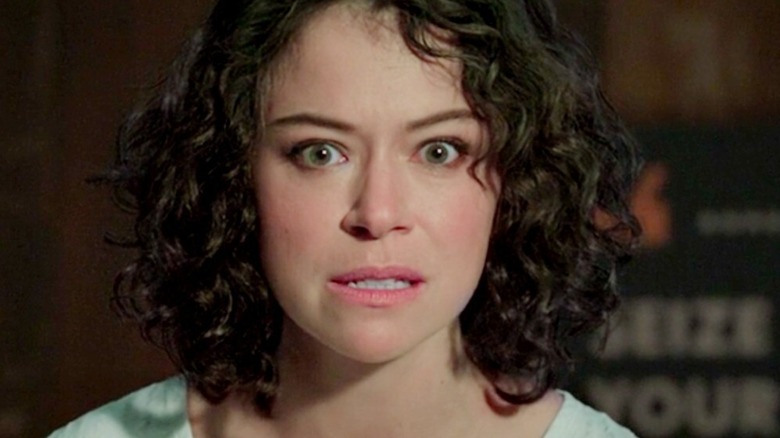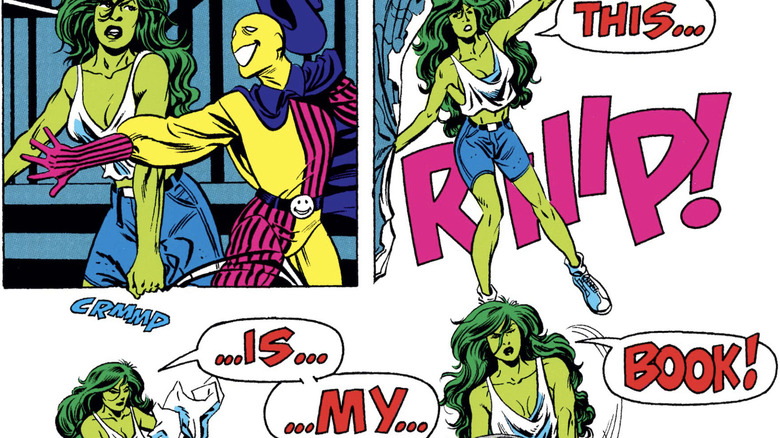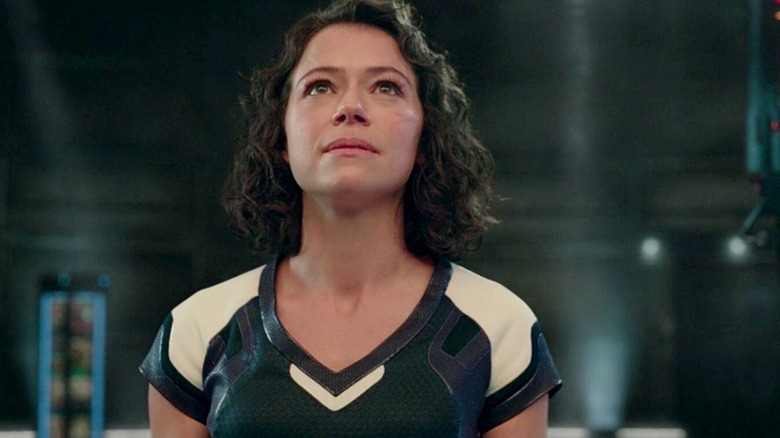She-Hulk's Fourth Wall Breaks Explained
This article contains Hulk-sized spoilers for the season finale of "She-Hulk: Attorney at Law"
The season finale of "She-Hulk: Attorney at Law" proved to be one of the most audacious moments in the Marvel Cinematic Universe. With Jennifer Walters' (Tatiana Maslany) life upended by online trolls who baited her into going on a Hulk rampage, she seeks to expose them and bring them to justice. But as the final battle spins out of control, with new Hulks being created and old ones returning from outer space to save the day, Jen takes control of the narrative. In the ultimate fourth wall break, she smashes out of the Disney+ homepage, blasts into the "real world," and confronts her own writers' room about the hackneyed final battle they've come up with for her.
Eventually, Jen tracks down "Kevin," who we at home assume to be the Kevin Feige, head of Marvel Studios. But instead, she finds a robot named K.E.V.I.N. (Knowledge Enhanced Visual Interconnectivity Nexus), who uses an algorithm to determine what goes into each MCU production. In a scene reminiscent of Neo discovering the Architect in "The Matrix Reloaded," Jen argues her case to K.E.V.I.N., convincing the AI to let her take control of her own narrative.
While the scene is undoubtedly the most meta MCU moment to date, it's actually par for the course for She-Hulk as a character. Throughout her decades-long history, Jen's real power hasn't been her green muscles but her ability to directly address her creators and readers. Here's She-Hulk's fourth wall breaks explained, from page to screen.
A history of She-Hulk wall smashes
Although, in the early years after Stan Lee created her, She-Hulk was initially more akin to her big green cousin as seen in runs like "Savage She-Hulk," it wasn't long before her writers figured out an original angle for Jennifer Walters. Years before Deadpool ever made it to the page, She-Hulk became a smasher of walls both literal and figurative. Writer John Byrne saw an opportunity to write her as a satirical figure within the Marvel comics universe, someone who could poke fun at the tropes and conventions of the genre, much as The Onion pokes fun at real news headlines. So, in 1989, with the "Sensational She-Hulk" series, Jen gained the metatextual awareness that she was in a comic book. She spoke directly to her writers, editors, and to the reader. She got jealous when other characters threatened to overshadow her, mocked the writers for shoddy writing and the illustrators for catering to the male gaze, and even tore through the pages of her own issues to skip to the good parts.
The meta, mouthy version of Jen quickly cemented itself as the de-facto, and when writer Dan Slott took over in the mid-aughts for a run that would be collected under the title "Single Green Female," he kept that premise intact. Slott's run saw Jen hired by GLK&H, a law firm specializing in superhero cases, and the series was structured as a legal procedural. While not as directly fourth-wall-breaking as Byrne's run, the juxtaposition of superpowered beings interacting with the American legal system provided a sly framework to poke fun at superhero comics in its own way.
Ultimately, when it came time to bring She-Hulk to life for live action in "She-Hulk: Attorney at Law," the show's creators decided to merge Byrne and Slott's ideas.
How She-Hulk's comic book wall breaks influenced the TV show's creators
Aside from the legal comedy, one element of Dan Slott's "She-Hulk" run that helped inform "She-Hulk: Attorney at Law" was the existence of Marvel comics within the comics. As noted by Polygon, the basement of GLK&H contains every Marvel book, which the firm classifies as legal documents. Together with John Byrne's brash approach to fourth wall breaks, it planted the seed for the Disney+ show's mind-bending finale. With Slott's narrative framework and Byrne's direct addresses, "She-Hulk: Attorney at Law" was born.
Speaking to Marvel, "She-Hulk: Attorney at Law" head writer Jessica Gao said that Byrne's meta-humor inspired the idea to have Jen confront K.E.V.I.N. in Episode 9, something they'd been laying the groundwork for all season with Jen's constant addresses direct-to-camera. "It just felt right that she would go and complain to the ultimate lord of Marvel, which is K.E.V.I.N.," she explained.
In other words, Jen's constant fourth wall breaks in "She-Hulk: Attorney at Law" were more than the writers thinking outside the box. They've been a core aspect of the character for over 30 years and may even be Jen's greatest superpower.


